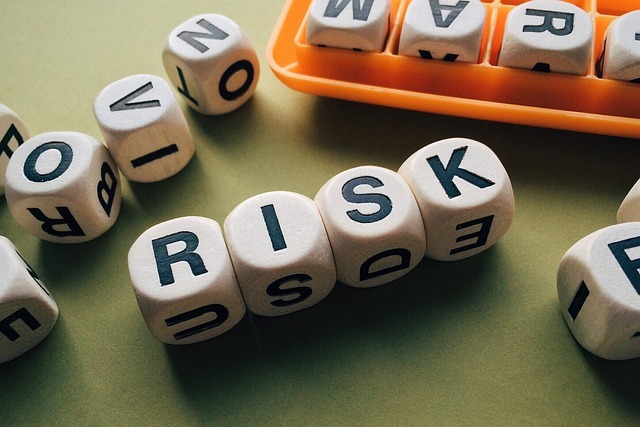Using effective forex risk management, currency traders may reduce losses brought on by exchange rate changes. As a result, putting a good strategy in place for managing forex risk may make trading currencies safer, more manageable, and less stressful. In this article, we’ll discuss the foundations of fx risk management and how to apply them to your workflow effectively.
WHAT IS RISK MANAGEMENT IN FOREX?
Traders might take individual activities to protect themselves from a trade’s potential downside making up forex risk management. More risk increases the possibility of significant profits but also increases the possibility of substantial losses. Therefore, one of the most important skills for every trader is controlling risk levels to reduce loss and maximize gain.
How can a trader do this? Examples of risk management include establishing the proper position size, placing stop losses, and managing emotions while entering and leaving trades. These safeguards may mean the difference between lucrative trading and total loss if adequately implemented.

TOP 5 FOREX RISK MANAGEMENT FUNDAMENTALS
1. ) Risk Appetite
The key to effective FX risk management is determining your level of risk tolerance. “How much am I prepared to lose on one trade?” is a question traders should consider. This is crucial for the most volatile currency pairings, including some of the currencies of developing markets. Additionally, forex trading liquidity impacts risk management since less liquid currency pairings may make it more difficult to join and exit positions at the desired price.
If you don’t know how much you can afford to lose, your position size may be too large, leading to losses that make it difficult for you to execute the following trade or even worse.
Say 50% of your transactions are profitable. Mathematically speaking, you may anticipate runs of many unsuccessful transactions in a row over the long term. The probabilities indicate that you will have 13 consecutive losses throughout your trading career, including 10,000 deals. This emphasizes the importance of being aware of your risk tolerance since you need to have enough money in your account to cover unexpected losses.
What level of risk should you take? Generally, you should only risk 1% to 3% of your account balance for every transaction. Therefore, if your account has $100,000, your risk amount would be between $1,000 and $3,000.
2.) Position Size
The number of lots you take on a trade, or the size of your position, is crucial since the proper amount will both maximize your prospects and safeguard your account. Before choosing your position, you must decide your stop placement, risk percentage, pip cost, and lot size. Click the link above to learn more about how to carry out these actions.
3.) Stop Losses
Another important idea to comprehend for efficient risk management in forex trading is the use of stop loss orders, which are put to cancel a deal when a specific price is achieved. You can avoid substantial losses if you know when you want to quit a trade. However, what is the point? Generally speaking, it’s the moment your original trade theory is shown to be false. Click on the link labeled “Using stop loss orders” for additional information on this idea.

Traders should use stops and limits to impose a risk/reward ratio of 1:1 or greater. In a ratio of 1:1, you are putting $1 at risk for a possible $1 gain. Each transaction should include a stop and a limit, with the limit being at least as far away from the market price as the stop.
The following table illustrates how the results of various risk-reward ratios might alter a strategy:
| RISK-REWARD | 1-1 | 1-2 |
|---|---|---|
| Total Trades | 10 | 10 |
| Total Wins (40%) | 4 | 4 |
| Profit Target | 100 pips | 200 pips |
| Stop Loss | 100 pips | 100 pips |
| Pips Won | 400 pips | 800 pips |
| Pips Lost | 600 pips | 400 pips |
| Net Gain | (-200 pips) | 200 pips |
The table shows that the approach would have lost 200 pip if the trader had been seeking a dollar in return for every dollar staked. However, by changing this to a 1-to-2 risk-to-reward ratio, the trader improves their chances (even if they are only correct 40% of the time). Continue reading about risk-reward ratios for forex for a thorough explanation of this idea.
4.) Leverage
Leverage in forex trading enables traders to take on more risk than their trading account may usually permit, which increases both potential profit and danger. Therefore, leverage has to be handled appropriately.
DailyFX Senior Strategist Jeremy Wagner examined how traders performed depending on the amount of trading capital they employed and discovered that, on average, traders with lower account balances carried far more leverage than traders with bigger balances. However, traders employing less leverage outperformed smaller-balance traders utilizing leverage levels more than 20-to-1. Over 80% more often, winning trades were made by larger-balance traders compared to smaller-balance traders (with average leverage of 5:1). (using average leverage of 26-to-1).
Based on this knowledge, traders should be cautious when employing leverage and aware of its hazards, at least when just getting started.
5.) Maintaining Emotional Control
When investing in any financial market and taking a risk with your money, it’s critical to control your emotions. Making judgments out of boredom, greed, excitement, or terror might put your safety in danger. Maintaining a forex trading notebook or log may assist you in refining your methods based on historical facts – and not on your sentiments – and help you remove your emotions from the equation and trade rationally.

TOP TAKEAWAYS FROM FOREX RISK MANAGEMENT
In conclusion, traders should:
- Consider the risk/reward ratio, position size, and percentage of the account balance for each transaction to determine their attitude toward risk.
- To guard against the market moving against their position, place stop losses.
- Take care not to overuse or use leverage.
- Control your emotions.
- Keep a journal to help you make choices based on facts rather than emotions.

